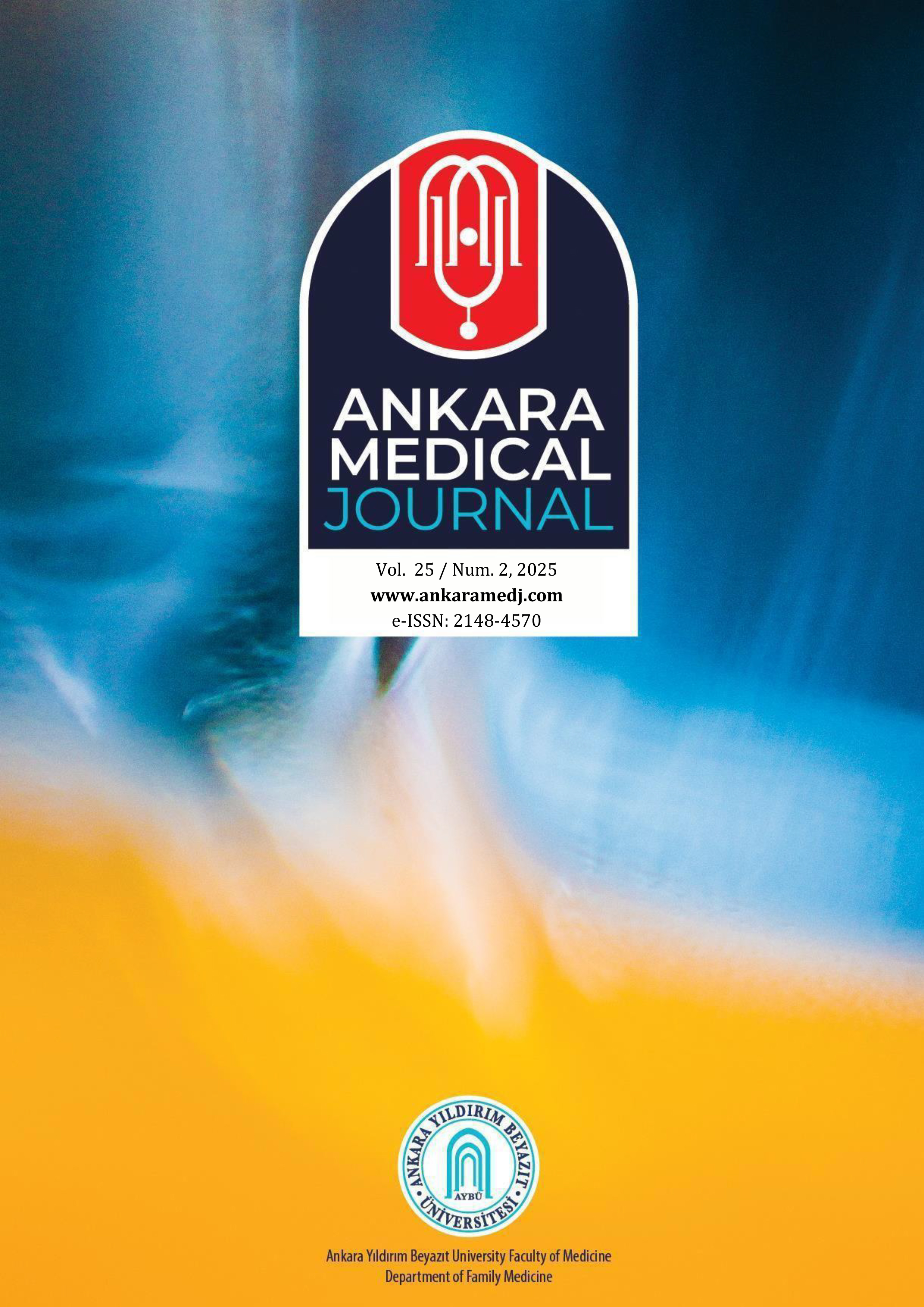Covid-19 pandemisi sürecinde son dönem akciğer hastalığı olan bireylerde kaygının değerlendirilmesi
Murat Yıldız1, Muhammet Ali Beyoglu2, Mehmet Furkan Şahin2, Kurtuluş Aksu11Sağlık Bilimleri Üniversitesi, Ankara Atatürk Göğüs Hastalıkları ve Göğüs Cerrahisi Eğitim Araştırma Hastanesi, Göğüs Hastalıkları Kliniği, Keçiören, Ankara2Ankara Şehir Hastanesi, Göğüs Cerrahisi Kliniği, Bilkent, Ankara
GİRİŞ ve AMAÇ: COVID-19 salgını sırasında son dönem akciğer hastalığı olan bireylerin kaygı düzeylerinin belirlenmesi amaçlanmıştır.
YÖNTEM ve GEREÇLER: Çalışmaya altta yatan akciğer hastalığı nedeni ile solunum yetmezliği olan ve uzun süreli oksijen tedavisi kullanan erişkinler dahil edildi. Katılımcılarda durumluk ve sürekli kaygı düzeyleri sırası ile STAI-1 ve STAI-2 skorlarına göre belirlendi.
BULGULAR: STAI-1 değerlendirmesine göre olguların 64ünde (28,57%) hafif, 142sinde (63,39%) orta, 18inde (8,03%) ağır düzeyde anksiyete, STAI-2 değerlendirmesine göre 44ünde (19,64%) hafif, 164sinde (73,21%) orta, 16inde (7,14%) ağır düzeyde anksiyete mevcuttu. STAI-2 değerlendirmesine göre kadınlarda (medyan; min-max: 50; 38-67) erkeklere (42; 26-75) göre kaygı düzeyi daha yüksekti (p<0,001). Hem STAI-1 hem de STAI-2 skorları psikiyatrik hastalığı olanlarda (52,5; 42-61 ve 52,5; 43-66, sırasıyla) psikiyatrik hastalığı olmayanlara (47; 21-67 ve 43; 26-75, sırasıyla) göre daha yüksekti (p= 0,015 ve p= 0,002, sırasıyla). STAI-2 skorları COVID-19 geçirmeyen bireylerde (44; 34-75) geçirenlere (40; 34-75) göre daha yüksekti (p<0,001). STAI-1 ve STAI-2 skorları salgına karşı alınan toplumsal önlemleri yeterli bulmayanlarda (50,5; 30-67 ve 45,5; 34-75, sırasıyla) yeterli bulanlara (45; 21-60 ve 43; 26-62, sırasıyla) kıyasla daha yüksekti (p<0,001 ve p=0,008, sırasıyla).
TARTIŞMA ve SONUÇ: Son dönem akciğer hastalığı tanısı olan bireylerde kaygının mevcut olduğu görülmüştür.
Evaluation of anxiety in individuals with end-stage lung disease during covid-19 pandemic
Murat Yıldız1, Muhammet Ali Beyoglu2, Mehmet Furkan Şahin2, Kurtuluş Aksu11University of Health Sciences Ankara Atatürk Chest Diseases and Chest Surgery Education and Research Hospital, Department of Chest Diseases, Keçiören, Ankara2Ankara City Hospital, Department of Thoracic Surgery, Bilkent, Ankara
INTRODUCTION: With this study, it was aimed to determine the anxiety levels of individuals with end-stage lung disease during the COVID-19 outbreak.
METHODS: Adults with respiratory failure due to underlying lung disease and using long-term oxygen therapy were included in the study. State and trait anxiety levels of the participants were determined according to the STAI-1 and STAI-2 scores.
RESULTS: According to the STAI-1 evaluation, 64 (28,57) of the cases had mild, 142 (63,39) moderate, and 18 (8,03) severe anxiety, and according to the STAI-2 evaluation, 44 (19,64) had mild, 164 (73,21) moderate, and 16 (7.14) had severe anxiety. According to the STAI-2 evaluation, the anxiety level was statistically significantly higher in women (median; min-max: 50; 38-67) compared to men (42; 26-75) (p <0.001). Both STAI-1 and STAI-2 scores were higher in patients with psychiatric disease (52.5; 42-61 and 52.5; 43-66, respectively) than those without psychiatric disease (47; 21-67 and 43; 26-75, respectively) (p = 0.015 and p = 0.002, respectively). STAI-2 scores were higher in individuals who havent contracted COVID-19 (44; 34-75) than those who did (40; 34-75) (p <0.001). STAI-1 and STAI-2 scores were higher in participants who think that social measures taken against the epidemic are sufficient (50.5; 30-67 and 45.5; 34-75, respectively) compared to those who think insufficient (45; 21-60 and 43; 26-62, respectively) (p <0.001 and p = 0.008, respectively).
DISCUSSION AND CONCLUSION: Anxiety is observed in individuals with a diagnosis of end-stage lung disease.
Makale Dili: Türkçe
(814 kere indirildi)





